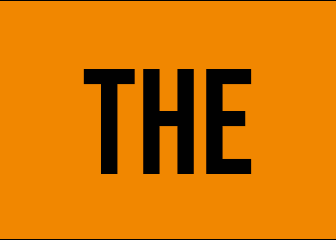This article first appeared in last week’s edition of REB Intelligence. More information on this will be provided at the REB Summit on 30 October. Please visit http://harosa.com/reb-recycling-summit-2017/ to attend
After having trawled through a number of Chinese Government websites, using Google Translate, REB Intelligence can now reveal the full extent of the Chinese ban on certain imports and provide greater clarity on what is likely to be allowed to be exported, and what can’t be.
However, this is with the proviso that it has been sourced using Google Translate, so please use as guidance until official Chinese confirmation is provided.
Also, please note that some of these Chinese documents were in draft form, so could still be subject to change.
Firstly, the big news that hasn’t really been reported so far is that the Chinese Office of the State Council issued a notice on 27 July that outlined the Government’s intention to gradually reduce the import of solid waste by the end of 2019 and replace them with domestic sources.
However, this does seem to imply that where domestic sources cannot replace imports of materials, then they will still be permitted.
In order to do this, China intends to increase the amount of domestic solid waste recycling from 246 million tonnes in 2015 to 350 million tonnes by 2020.
The Ministry of Environmental Protection, Ministry of Commerce, National Development and Reform Commission, General Administration of Customs, and AQSIQ will be responsible for progressively reducing the type and quanitity of solid waste imports by the end of 2019.
This could include removing other materials from the allowed list of imports, so those materials that will still be able to be exported may yet be banned over the next couple of years.
China also intends to maintain a “high pressure situation” to prevent foreign garbage smuggling.
This suggests a continuing regime of stringent inspections. Indeed, one way it may do this is by restricting the number of ports where solid waste can be sent in order to focus the inspection regime on certain ports.
It will also strengthen the pre-shipment phase of inspection with strict standards and enhanced audits.
In the last few days, China has issued draft documents on the revision of the GB standards for the import of solid wastes.
These are out for consultation, but were made available on the Ministry of Environmental Protection website in Chinese, and again have been translated via Google Translate.
For paper, the document outlines the commodity codes that are covered by the standard GB16487.4.
These are:
- 47071000000 – Recovered (waste and scrap) unbleached kraft, corrugated paper or paperboard
- 47072000000 – Recovered (waste and scrap) bleached chemical wood pulp for paper and board
- 47073000000 – Recovered (waste and scrap) made of mechanical pulp, paper or paperboard (eg waste newspapers, magazines and similar printed matter).
Clearly, this does not include the commodity code 470790090 relating to other paper and is assumed to mean mixed paper, which is now added to the list of banned materials.
Indeed, the draft document says that China will “ban the import of waste paper mixed unsorted”.
Although the word “unsorted” still causes some confusion here, the fact that the word “mixed” is used does seem to suggest that exporters who are currently acting cautiously and not intending to send mixed paper from September might be correct to do so.
Some believe we may see a more news rich mixed paper grade that may be allowed into China, but if this will be allowed isn’t yet clear.
What will be a huge concernt to all those stakeholders involved in the export of paper, is that the Chinese Government intends to reduce the tolerated contamination level of 1.5% currently, to just 0.3%.
While many had expected a reduction, with 1% being suggested as likely, the 0.3% contamination suggested by the draft document will be very difficult to meet for the UK without significant changes to the supply chain and collection and sorting regime.
For the plastics sector, the news looks slightly brighter than it could have been.
Previously, the World Trade Organisation notification document had outlined China’s intention to ban scrap plastics, which many had assumed to mean all scrap plastics.
This was especially the case as it listed all the relevant plastic commodity codes.
However, the notification also contained the curious phrase “from living sources”, which many had discounted because they, understanably, did not know what it meant.
It now appears that this was a way of saying “post-consumer” as the new lists of restricted and banned materials shows non-industrial sources are on the banned lists, but industrial sources are allowed.
The banned materials are essentially:
- Post-consumer bottles
- Waste polymers of ethylene from non-industrial sources
- Scrap and waste styrene polymer from non-industrial sources
- Scrap and waste vinyl chloride polymer from non-industrial sources
- Other scrap and waste polymers from non-industrial sources.
Those waste polymers that are allowed to be exported to China will fall under the GB16487.12 standard.
Like paper, a contamination level of just 0.3% will be allowed for these exports.
On the restricted list of imports, that outlines the materials that can be imported as long as they meet these GB standards, it is clear that all plastic commodity codes will be allowed to be imported as long as they are from industrial sources.
This means that they must be from the manufacturing process and therefore would include defective products and waste material from the manufacturing process.



